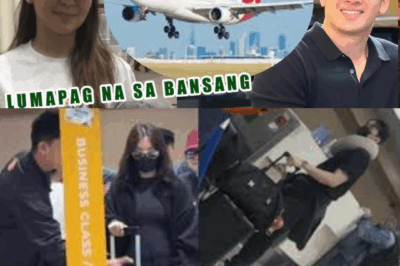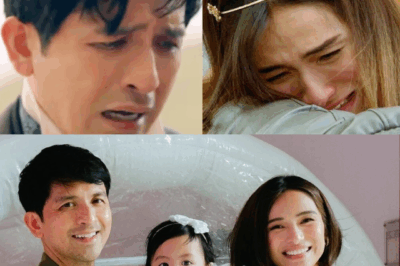She walked down the dirt path with a grace that didn’t belong to this world. Her feet were bare, her steps soft, but what drew people’s eyes wasn’t how she moved—it was what she looked like. Her skin shimmered under the sunlight, not with oil or sweat, but with something that looked like sugar crystals scattered across a porcelain canvas.
Children paused mid-play. Vendors stopped weighing vegetables. Even stray dogs stared with silent wonder. No one had ever seen anything like her.
“She looked like a sculpture,” said Mang Efren, a tricycle driver in the barangay. “Parang gawa sa asukal at yelo ang balat niya. At ‘yung mga paa niya… halos dikit-dikit ang mga daliri. Hindi ko alam kung anong klaseng nilalang siya.”
No one knew where she came from. No family, no backstory, no identification. She was first seen near the old chapel, kneeling on the grass, as if she had been dropped there by the wind. Locals say she didn’t speak at first. Just smiled—soft, uncertain—and pointed to her chest, as if saying, “Ako ‘to. Ito lang.”
Barangay officials tried to speak to her, to help. They brought food, clothing, even a doctor. But the woman refused to speak more than a word or two. She simply sat, sometimes walked, sometimes stared at the sky for hours.
“She’s not mentally unstable,” said Nurse Eliza, one of the first to examine her. “She understands everything. But her body… her skin… it’s something I’ve never seen before. It’s dry, almost scaly, but when light hits it, it looks like cracked sugar. And her toes… they’re not just close together. They’re fused, almost like one limb.”
Rumors, of course, spread like wildfire.
Some said she was cursed. That she had broken a vow, and the sugar on her skin was a punishment from spirits of the mountains.
Others said she was a miracle. A holy sign. That her feet were fused because she was once an angel who tried to return to heaven—and failed.
“She doesn’t blink like us,” one old woman whispered. “She watches like she’s remembering something painful.”
A more practical theory came from a Manila-based skin specialist, Dr. Rodel Uy, who heard about the case online. After viewing photos, he suggested she might have a rare genetic disorder—possibly ichthyosis or a form of syndactyly combined with xerosis—but even then, he admitted, “I’ve never seen this patterning before. There’s something… almost designed about her condition. As if nature intended her to look this way.”
Despite her silence, the woman began drawing attention from beyond the barangay. People traveled from nearby towns to catch a glimpse. Influencers, vloggers, even a crew from a morning talk show requested interviews—all were declined. The barangay captain, fearing exploitation, banned anyone from taking pictures.
But stories leaked anyway.
One account claimed she wept silently at night, touching the fused space between her toes as if longing for something lost.
Another said she refused to eat anything white—rice, bread, sugar—as if it reminded her too much of what covered her skin.
A third claimed she spoke once, only once, to a child who asked if she was a fairy. She bent down, smiled, and whispered, “Hindi. Ako ang naiwang tao.” (No. I am the one left behind.)
There was one person she seemed to trust: a young woman named Carla, a volunteer teacher from the city who stayed in the area. Carla brought her books, lotions, scarves. They would sit under the trees near the river, not talking much, but sometimes—very softly—the woman would hum.
“She has a beautiful voice,” Carla said. “It’s haunting. Like a lullaby from a place we don’t remember.”
Carla also noticed the woman tracing letters into the dirt—symbols that didn’t quite match any known alphabet. “Maybe it’s a language only she knows. Or maybe it’s just memory,” she whispered.
Weeks passed, and the woman’s presence became less strange, more sacred. She never asked for anything. Never hurt anyone. She was just there—like fog, like a secret that refused to be unraveled.
Then, one morning, she was gone.
Her spot by the river was empty. Her small woven mat remained, but nothing else. No footprints. No notes. Not even a trace of her scent.
People searched. The barangay organized teams. Drones were used. But she had vanished the way she had come—silently, completely.
“She was not meant to stay,” Carla said, tears in her eyes. “She was passing through.”
To this day, locals still visit the riverside, hoping to feel whatever magic she left behind. Children make drawings of a woman with sugar skin and webbed toes. Elders pray for her safety. And somewhere in the hearts of those who saw her, a quiet ache remains.
Because in a world so loud with explanation, she reminded us of the beauty of mystery. That not all stories come with answers. Some just come—and change us.
News
New Life Abroad? Kathryn Bernardo Allegedly Moving In With Mayor Mark Alcala in Australia
It started as just another rumor—until it didn’t. Fans of Kathryn Bernardo were left stunned as news began to circulate…
Dennis Trillo Breaks Down Over What Happened to Jennylyn Mercado’s Son with Patrick Garcia
Dennis Trillo has always been known as one of the most composed and private actors in showbiz. Calm, respectful, and…
Annabelle Rama Slams Barbie! Richard Gutierrez’s Breakup Linked to Third Party and Albay Exit
It was a storm no one expected, but now that it’s here—everyone’s watching. In what began as quiet speculation and…
Paulo Avelino Breaks Silence: Why He Held Back from Janine Gutierrez
For years, their names were linked by something electric yet invisible—Paulo Avelino and Janine Gutierrez, two stars whose chemistry burned…
Marian vs. Karylle? Heated Scene Between Actresses Goes Viral—What Really Happened?
What was meant to be a glamorous event quickly turned into one of the most talked-about showbiz moments of the…
Trouble at Home? Kathryn Bernardo Reportedly Leaves After Mommy Min Disapproves of Mark Alcala
In a shocking twist that has sent waves across the fandom, reports are now surfacing that beloved actress Kathryn Bernardo…
End of content
No more pages to load












